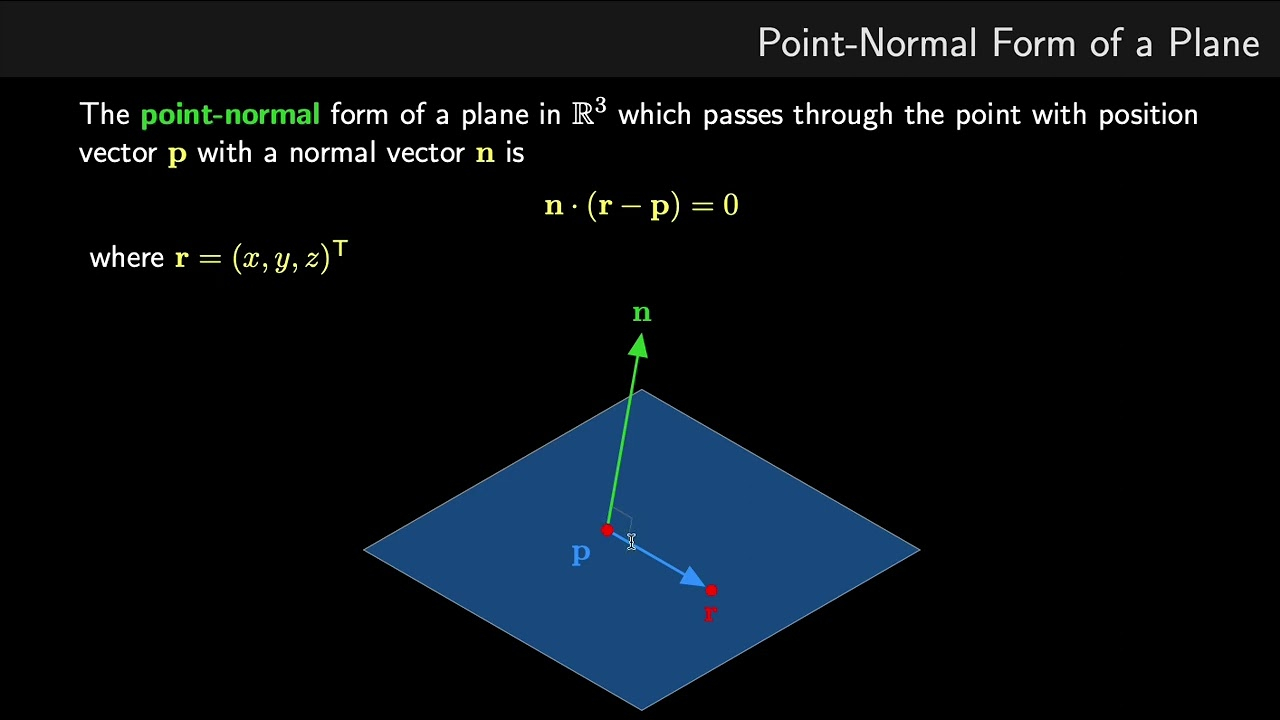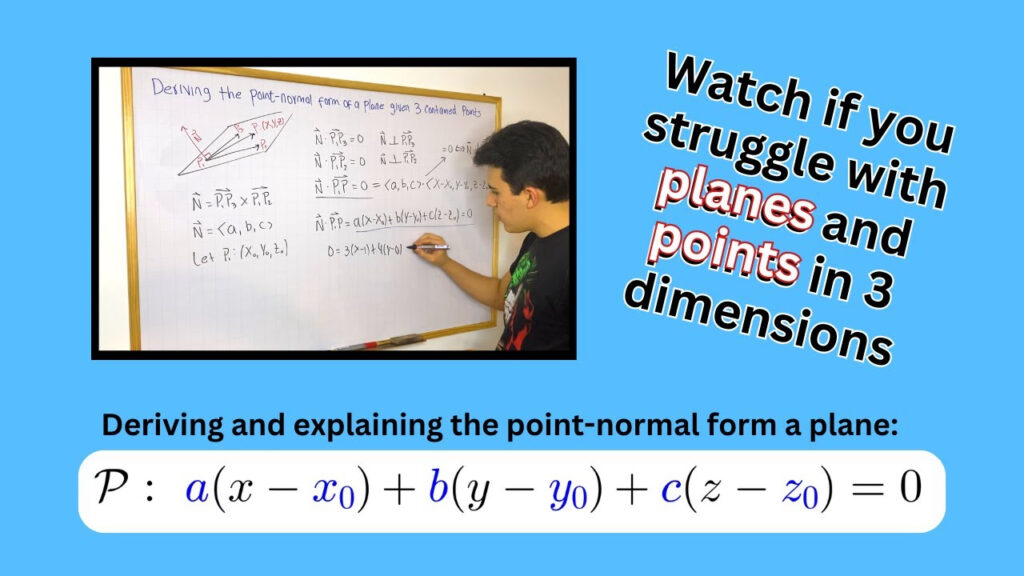Point normal form is a mathematical representation used to describe a plane in three-dimensional space. It is defined by a point on the plane and a perpendicular vector (normal vector) to the plane. The equation of a plane in point normal form is represented as:
A(x – x0) + B(y – y0) + C(z – z0) = 0
Point Normal Form Plane
Where (x0, y0, z0) is the point on the plane and (A, B, C) is the normal vector.
How to Determine Point Normal Form?
To determine the point normal form of a plane, you need a point on the plane and a normal vector to the plane. The normal vector should be perpendicular to the plane and can be calculated using cross product of two vectors lying on the plane. Once you have the point and the normal vector, you can plug them into the equation mentioned above to represent the plane in point normal form.
For example, if you have a point (2, 3, 4) on the plane and a normal vector (1, -2, 3), the equation of the plane in point normal form would be:
1(x – 2) – 2(y – 3) + 3(z – 4) = 0
Conclusion
Understanding point normal form is essential in geometry and computer graphics for representing planes in three-dimensional space. By knowing a point on the plane and a normal vector, you can easily determine the equation of the plane in point normal form. This representation simplifies calculations involving planes and helps in visualizing their orientation in space.

